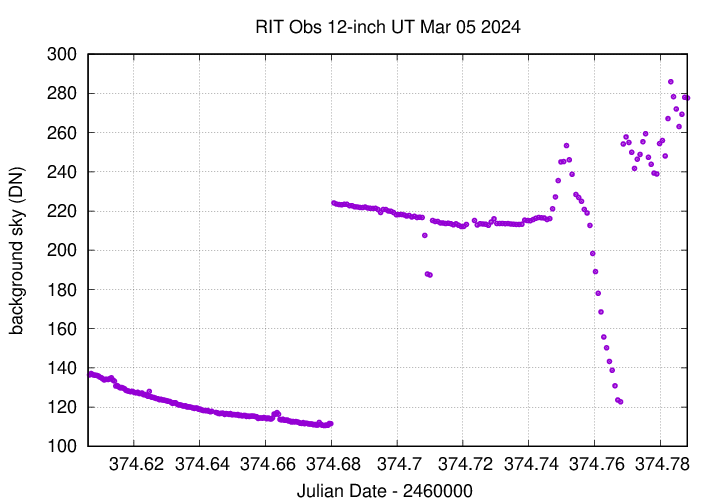
On the night of Mar 04/05, 2024, under good conditions, RIT students Mimi Harrison, Jason Sergio, Sebastian Montes, and I acquired images of the asteroid (1532) Inari. They are part of the PHYS 373 "Observational Astronomy" class, and their project is to make a light curve of the asteroid.
We experimented with different exposure times, and determined that in order to reach the precision required to submit our measurements to the ASPIREastro.net collaboration, we need to use unfiltered images of at least 60 seconds duration.
This asteroid has a rotation period which is thought to be around 25 hours, with an amplitude of about 0.09 mag; for more details, see the ASPIREastro.net Inari campaign guide.
These observations involved:
Notes from the night:
The picture below shows an image of the field of Inari on this night; The field of view is about 22 arcminutes across.

I've marked the location of several comparison stars.
star name B V ------------------------------------------------------ A TYC 832-1587-1 11.48 10.62 B TYC 832-1568-1 12.05 11.20 C TYC 832-1557-1 12.45 11.26 --------------------------------------------------------------------------
You can watch the asteroid move slowly to the north-west over the course of about 4.5 hours by clicking on the image below.
The sky background values show a jump when we changed the exposure time, and then the appearance of clouds near the end of the run.

The FWHM degraded just a bit as the night went on.
